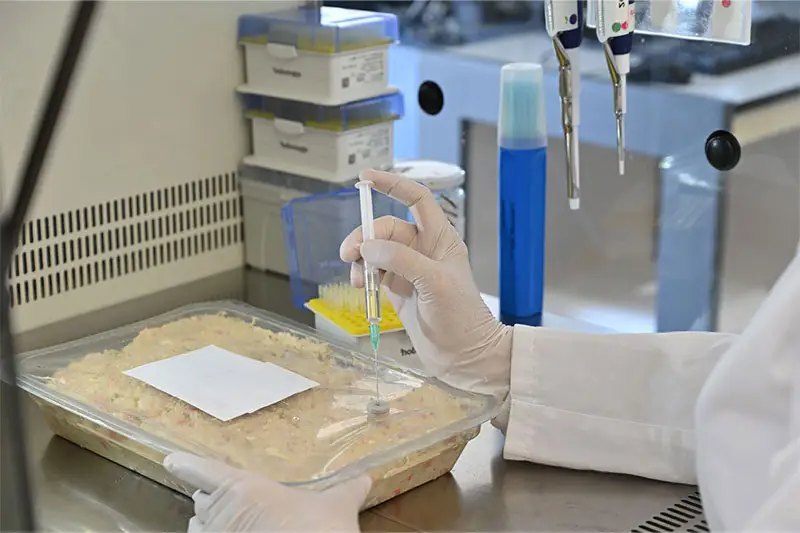Yeast and Mold Resistance Testing in Skin Care Products
The significance of microbiological safety testing, particularly with regard to yeast and mold resistance, cannot be overstated in the cosmetics sector. Microorganisms such as yeast and molds can pose significant risks if present in skin care products. These microorganisms not only affect product shelf life but also contribute to potential allergic reactions and infections among consumers.
In the context of skin care products, ensuring that a formulation is resistant to microbial growth is essential for consumer safety and satisfaction. The presence of even small quantities of yeast or mold can lead to spoilage, which in turn may result in product recalls and loss of reputation for brands. This service focuses on providing robust testing solutions aimed at identifying potential sources of contamination and ensuring that formulations are stable under various environmental conditions.
The process begins with careful selection of the appropriate test methods based on industry standards such as those set by ISO, ASTM, or EN. For instance, the ISO 16170 standard provides guidelines for microbiological examination of cosmetic products. Additionally, the American Society for Testing and Materials (ASTM) offers a range of practices and specifications relevant to this type of testing.
During specimen preparation, samples are collected from different stages of production, including raw materials, intermediate formulations, final products, and even finished goods in their intended packaging. Each sample undergoes rigorous processing steps designed to minimize contamination while accurately reflecting the conditions encountered during storage and use.
The choice of testing methods is critical in ensuring accurate results. Common approaches include aerobic plate count, total viable counts, mold and yeast counts, and ATP bioluminescence assays. These tests help determine whether the product contains any viable microorganisms that could pose a health risk to consumers.
After conducting these analyses, detailed reports are generated highlighting key findings such as types of fungi detected, levels of contamination, and recommendations for improvement where necessary. It’s important to note that this service does not merely offer compliance testing but also works closely with clients to develop strategies aimed at preventing future issues.
- Customer Impact: By identifying problem areas early on through thorough testing procedures, manufacturers can enhance product quality and protect their brand reputation.
- Satisfaction: Ensuring that every batch of skin care products meets strict safety standards leads to higher customer satisfaction and loyalty.
Scope and Methodology
The scope of this service encompasses the entire lifecycle of a cosmetic product, from raw material sourcing to final product distribution. It involves multiple stages where potential points of microbial contamination might arise. Raw materials must be carefully inspected for signs of mold or yeast growth before being incorporated into formulations.
During manufacturing, continuous monitoring ensures that all production processes adhere strictly to established protocols designed to prevent cross-contamination. This includes maintaining clean environments throughout the factory and using sterile equipment during mixing operations. Once packaging is sealed, additional checks are carried out to verify integrity of seals and ensure no breach has occurred which could allow entry of contaminants.
For finished goods, post-packaging storage conditions play a crucial role in preserving product quality. Temperature-controlled warehouses help maintain optimal temperature ranges suitable for minimizing microbial activity without compromising efficacy or stability over time.
The methodology employed follows internationally recognized guidelines ensuring consistency and reliability across all tests conducted. Laboratory facilities equipped with state-of-the-art technology allow accurate measurement of various parameters including pH levels, osmotic pressure, humidity, etc., which influence how well a product resists microbial attack. Reporting procedures follow strict criteria laid out by regulatory bodies to provide clear, actionable insights into the performance of each batch tested.
International Acceptance and Recognition
The importance of this service extends beyond national borders, given the international nature of many cosmetic industries. Adherence to internationally recognized testing protocols enhances a brand’s credibility not just domestically but globally as well. Many countries have adopted these standards due to their reliability and effectiveness in ensuring product safety.
For example, ISO 16170 has been widely accepted by various regulatory bodies around the world including those from Europe (EN), America (ASTM), Asia-Pacific region countries, among others. By aligning with such recognized frameworks, companies demonstrate their commitment to maintaining high standards of quality and safety.
In summary, yeast and mold resistance testing is an integral part of any comprehensive cosmetic testing regimen aimed at safeguarding consumer health while upholding brand integrity. Our services not only meet but exceed expectations set by regulatory authorities ensuring peace of mind for both manufacturers and consumers alike.





